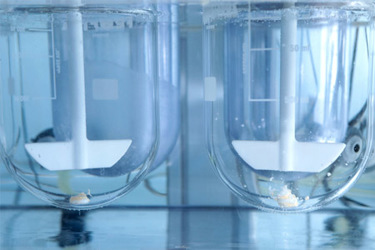Q&A: Media Selection For In Vitro Testing Of Poorly Soluble Drugs

The solubility of a drug in the gastrointestinal (GI) tract ― and its overall efficacy ― is highly dependent on the product’s physicochemical properties and the patient’s GI fluid properties. Poorly soluble drugs – Classes II and IV in the Biopharmaceutics Classification System ― make up a large portion of small molecules in the discovery stage of development. Overcoming poor solubility and ensuring these drugs are properly formulated with the most appropriate excipients requires in vitro testing using biorelevant dissolution media (BDM). While there are BDMs available today that include a variety of properties and compositions, designing one that can effectively evaluate how the interplay between your drug’s formulation and a patient’s GI fluid properties impact bioperformance is critical.
Deanna Mudie Ph.D., Principal Scientist in R&D at Lonza’s site in Bend, OR, recently presented the webinar, Streamlined Selection Of In Vivo Predictive Dissolution Media. In it, Dr. Mudie discussed the design of dissolution media to support biopredictive dissolution testing, which enables the development of bioavailability-enhancing formulations for poorly soluble drugs. In addition to covering a range of dissolution media properties and how they compare to in vivo GI fluid properties, Dr. Mudie also reviewed how the properties of a drug and formulation affect dissolution performance in these media as well as a case study describing in vitro dissolution testing of belinostat amorphous spray dried dispersions.
The following Q&A session was held after this webinar, where Dr. Mudie addressed attendee questions about the details of the presentation and case study.
Get unlimited access to:
Enter your credentials below to log in. Not yet a member of Pharmaceutical Online? Subscribe today.
